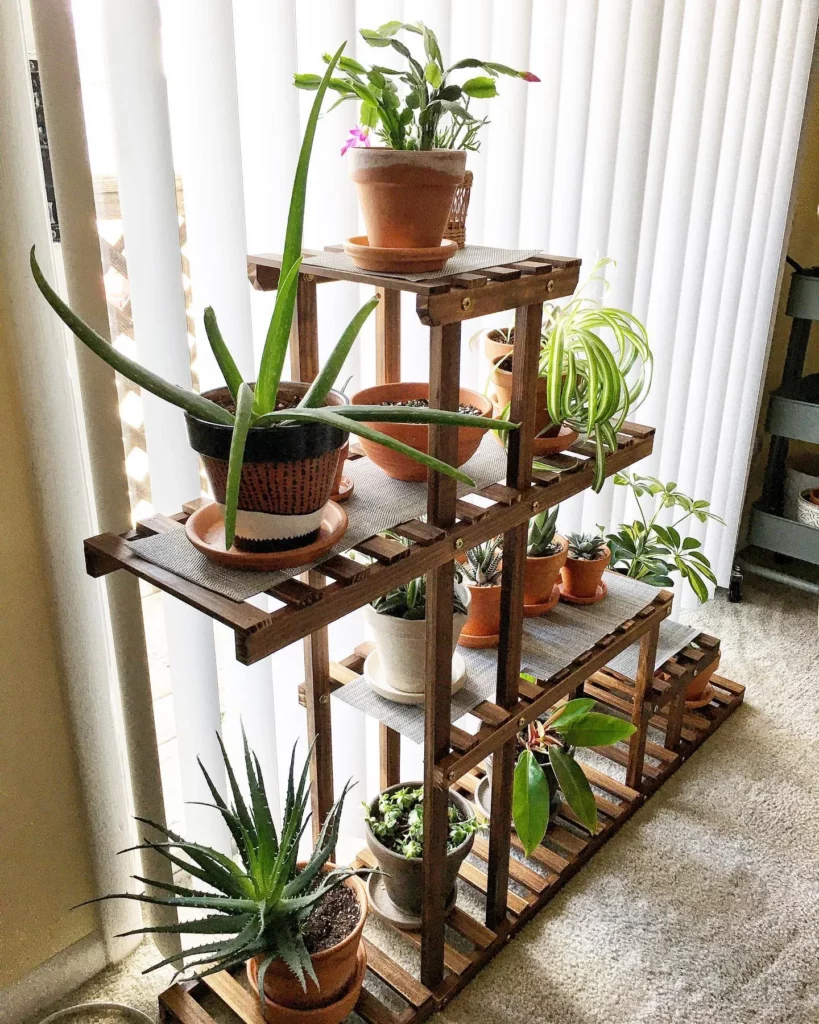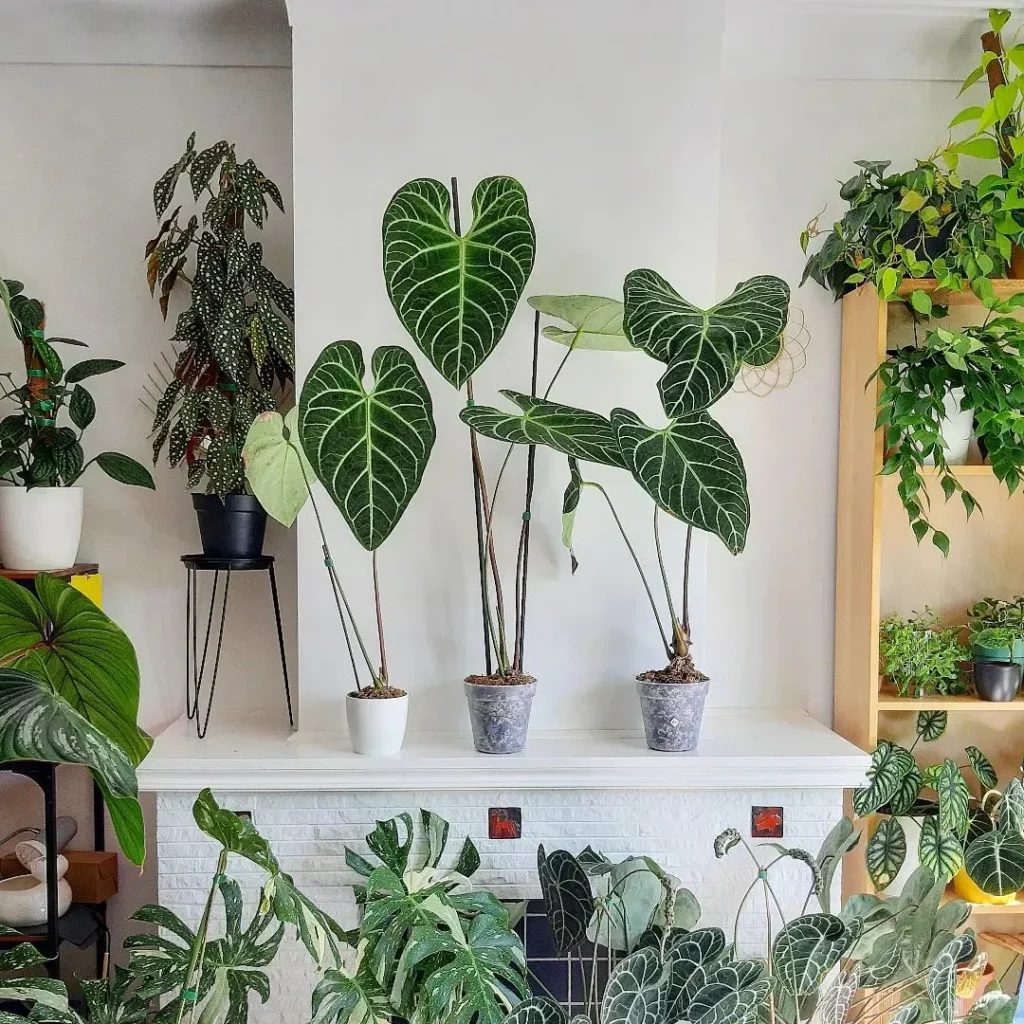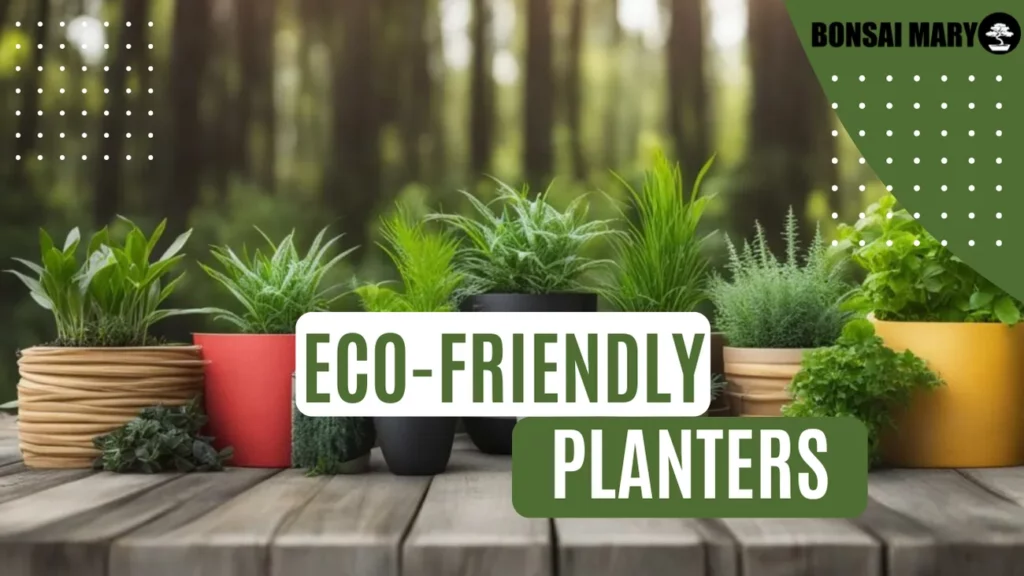As gardeners, it’s our responsibility to minimize our environmental impact while tending to our plants. Sustainable gardening is based on the principles of cultivating a healthy ecosystem, conserving resources, and reducing waste. By implementing eco-friendly practices, we can create beautiful, thriving gardens without compromising the health of our planet.
Understanding Sustainable Gardening

Eco-friendly planters play a crucial role in sustainable gardening. Traditional gardening practices often involve harmful chemical fertilizers and pesticides, which can cause environmental damage. Eco-friendly planters, on the other hand, utilize organic gardening methods that prioritize the health of the soil and plants.
This approach not only reduces the impact of gardening on the environment but also helps to promote healthy growth.
In addition, eco-friendly planters are typically made from sustainable materials that minimize waste and reduce the use of harmful chemicals. For example, biodegradable planters made from materials like bamboo or coconut coir break down naturally, avoiding the accumulation of non-biodegradable waste.
Some planters are even made from recycled materials, such as plastic bottles or pallets, making them an excellent waste reduction solution.
The use of eco-friendly planters in sustainable gardening practices supports our efforts towards creating a healthy and eco-conscious world. By reducing our impact on the environment, we can cultivate lush, beautiful gardens while contributing to a cleaner, more sustainable future.
Eco-Friendly Planter Materials

Eco-friendly planters are a popular choice among environmentally conscious gardeners. The materials used in these planters are carefully selected to minimize the negative impact on the ecosystem. Biodegradable planters made from natural materials like bamboo or coconut coir are an excellent option.
They are not only sustainable but also add an earthy aesthetic to your garden. These planters are also biodegradable, which means they can decompose naturally without causing harm to the environment.
Another sustainable option for eco-friendly planters is using recycled materials. This not only reduces waste but also gives a new life to materials that would otherwise end up in landfills. Many recycled materials like plastic bottles, paper, and wood can be transformed into sturdy and durable planters.
Innovative Design Features

One of the key features of eco-friendly planters is their innovative design that promotes sustainable gardening practices. Self-watering planters, for instance, reduce water waste and make maintenance hassle-free. These planters have a built-in reservoir that automatically waters the plants, minimizing the need for frequent watering.
Vertical gardening is another innovative design feature that maximizes space utilization for urban and small-scale gardens. By using wall-mounted or hanging planters, gardeners can grow plants vertically, saving valuable floor space while creating a stunning visual display. This design feature is perfect for those who want to garden in small apartments, balconies, or patios.
Space-saving designs of eco-friendly planters are a boon for gardeners who want to optimize their available space. Such planters come in various shapes and sizes and fit perfectly into any garden design.
Some space-saving planters have a stackable design that allows gardeners to add more plants without taking up additional space, making them ideal for small gardens and indoor gardening.
Benefits for Plants and Gardeners

Eco-friendly planters offer several benefits for both plants and gardeners. One significant advantage of these planters is the promotion of plant health through proper drainage and aeration. By facilitating healthy root development, these planters can improve overall plant growth and yield.
Another advantage of eco-friendly planters is water conservation. These planters typically have built-in features that minimize water waste, such as self-watering systems that provide just the right amount of water that the plant needs. This not only saves water but also enables gardeners to conserve valuable time and effort.
In addition to plant health and water conservation, eco-friendly planters are also designed for convenience. They are usually lightweight and come with wheels that make them easy to move around, especially if you have a larger garden. Maintenance is also made easy, and you won’t have to worry about bending over or getting your hands dirty.
Integrating Eco-Friendly Planters into Your Garden

Adding eco-friendly planters to your garden is an excellent way to enhance sustainability while enjoying the benefits of gardening. To achieve the best results, there are practical tips you need to consider when integrating these planters into your garden.
-
Garden Design: To make your garden stand out, consider incorporating eco-friendly planters into your garden design. Choose planters that blend seamlessly with your garden design to improve your overall aesthetic appeal. Avoid cluttering your garden with too many planters as this may make your garden look busy and cramped.
-
Aesthetic appeal: The beauty of your garden is essential, and selecting the right eco-friendly planter offers many options to help achieve your desired look. Choose planters that add color and texture to your garden, complement existing plants, or create an eye-catching statement. When selecting planters, consider browsing various options to find one that suits your taste.
-
Plant selection: Careful plant selection is crucial when integrating eco-friendly planters into your garden. When these planters are the right fit for your plants, your garden flourishes. When choosing plants, consider their growth habits, whether they need direct sunlight, their moisture needs, and their general care requirements. Selecting plants that thrive in your eco-friendly planters ensures healthy growth and development over time.
The Future of Sustainable Gardening
The future of gardening is bright, thanks to the emergence of new green innovations that are set to revolutionize sustainable practices. Gardeners today are becoming increasingly aware of the need for environmentally-conscious solutions that not only preserve the planet but also promote organic, healthy living.
As a result, the gardening industry is witnessing a surge in demand for sustainable, eco-friendly products that cater to these needs and preferences.
One of the exciting green innovations we’re seeing is the advent of smart planters that use sensors to monitor plant growth and environmental conditions like humidity, temperature, and light. These planters provide real-time feedback that helps gardeners adjust watering schedules, nutrient levels, and other care requirements for optimal plant health.
They are a game-changer for busy urban gardeners who lack the time or expertise for traditional gardening methods. Smart planters are also perfect for those who want to reduce water waste and conserve resources.
Another notable trend is the use of eco-friendly fertilizers that are chemical-free and derived from natural sources like compost or worm castings. These fertilizers are not only safe for the environment but also enhance soil health and boost plant growth naturally.
With the increasing awareness of the importance of soil health in sustainable gardening, eco-friendly fertilizers are in high demand among gardeners who seek to nurture the earth in a responsible, eco-conscious manner.
Finally, environmental consciousness is at the core of sustainable gardening practices. It requires a shift in mindset to view gardening not as a hobby or pastime but as a way of life that promotes sustainability and preserves natural resources for future generations.
Gardeners who embrace this perspective are more likely to adopt green practices like composting, water conservation, and utilizing eco-friendly products like planters and fertilizers. This shift in gardening culture is an encouraging development that bodes well for the future of sustainable gardening and the planet as a whole.








